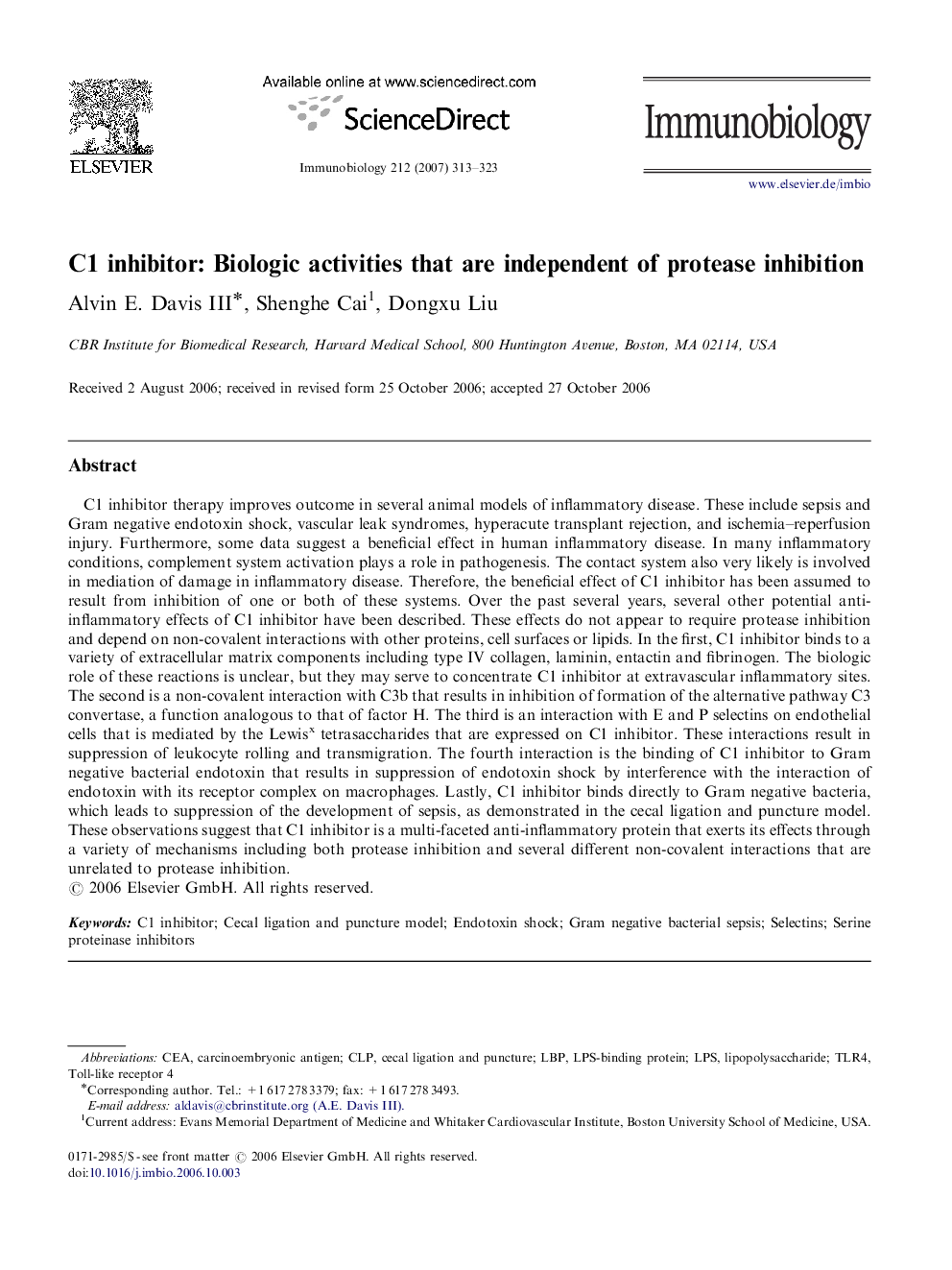| کد مقاله | کد نشریه | سال انتشار | مقاله انگلیسی | نسخه تمام متن |
|---|---|---|---|---|
| 8472161 | 1550303 | 2007 | 11 صفحه PDF | دانلود رایگان |
عنوان انگلیسی مقاله ISI
C1 inhibitor: Biologic activities that are independent of protease inhibition
دانلود مقاله + سفارش ترجمه
دانلود مقاله ISI انگلیسی
رایگان برای ایرانیان
کلمات کلیدی
LPSCLPLBPTLR4Serine proteinase inhibitorsC1 inhibitor - C1 بازدارندهCeA - CEAcarcinoembryonic antigen - آنتی ژن carcinoembryonicSelectins - انتخاب هاCecal ligation and puncture - انقباض و سوراخ شدن سکته مغزیEndotoxin shock - شوک اندوتوکسینlipopolysaccharide - لیپوپلی ساکاریدLPS-binding protein - پروتئین اتصال دهنده LPSToll-like receptor 4 - گیرنده تله مانند 4
موضوعات مرتبط
علوم زیستی و بیوفناوری
بیوشیمی، ژنتیک و زیست شناسی مولکولی
بیولوژی سلول
پیش نمایش صفحه اول مقاله

چکیده انگلیسی
C1 inhibitor therapy improves outcome in several animal models of inflammatory disease. These include sepsis and Gram negative endotoxin shock, vascular leak syndromes, hyperacute transplant rejection, and ischemia-reperfusion injury. Furthermore, some data suggest a beneficial effect in human inflammatory disease. In many inflammatory conditions, complement system activation plays a role in pathogenesis. The contact system also very likely is involved in mediation of damage in inflammatory disease. Therefore, the beneficial effect of C1 inhibitor has been assumed to result from inhibition of one or both of these systems. Over the past several years, several other potential anti-inflammatory effects of C1 inhibitor have been described. These effects do not appear to require protease inhibition and depend on non-covalent interactions with other proteins, cell surfaces or lipids. In the first, C1 inhibitor binds to a variety of extracellular matrix components including type IV collagen, laminin, entactin and fibrinogen. The biologic role of these reactions is unclear, but they may serve to concentrate C1 inhibitor at extravascular inflammatory sites. The second is a non-covalent interaction with C3b that results in inhibition of formation of the alternative pathway C3 convertase, a function analogous to that of factor H. The third is an interaction with E and P selectins on endothelial cells that is mediated by the Lewisx tetrasaccharides that are expressed on C1 inhibitor. These interactions result in suppression of leukocyte rolling and transmigration. The fourth interaction is the binding of C1 inhibitor to Gram negative bacterial endotoxin that results in suppression of endotoxin shock by interference with the interaction of endotoxin with its receptor complex on macrophages. Lastly, C1 inhibitor binds directly to Gram negative bacteria, which leads to suppression of the development of sepsis, as demonstrated in the cecal ligation and puncture model. These observations suggest that C1 inhibitor is a multi-faceted anti-inflammatory protein that exerts its effects through a variety of mechanisms including both protease inhibition and several different non-covalent interactions that are unrelated to protease inhibition.
ناشر
Database: Elsevier - ScienceDirect (ساینس دایرکت)
Journal: Immunobiology - Volume 212, Issues 4â5, 26 June 2007, Pages 313-323
Journal: Immunobiology - Volume 212, Issues 4â5, 26 June 2007, Pages 313-323
نویسندگان
Alvin E. III, Shenghe Cai, Dongxu Liu,